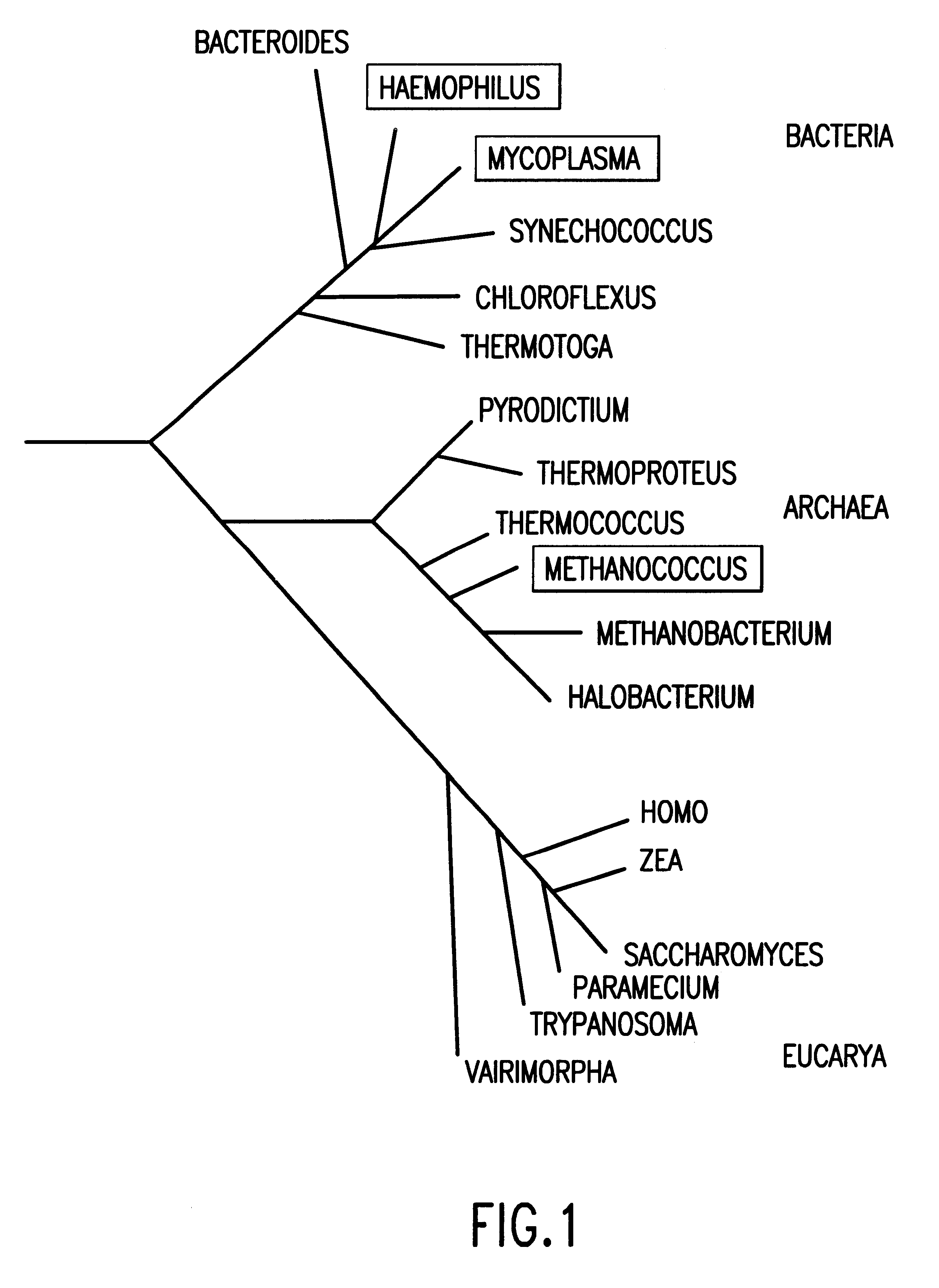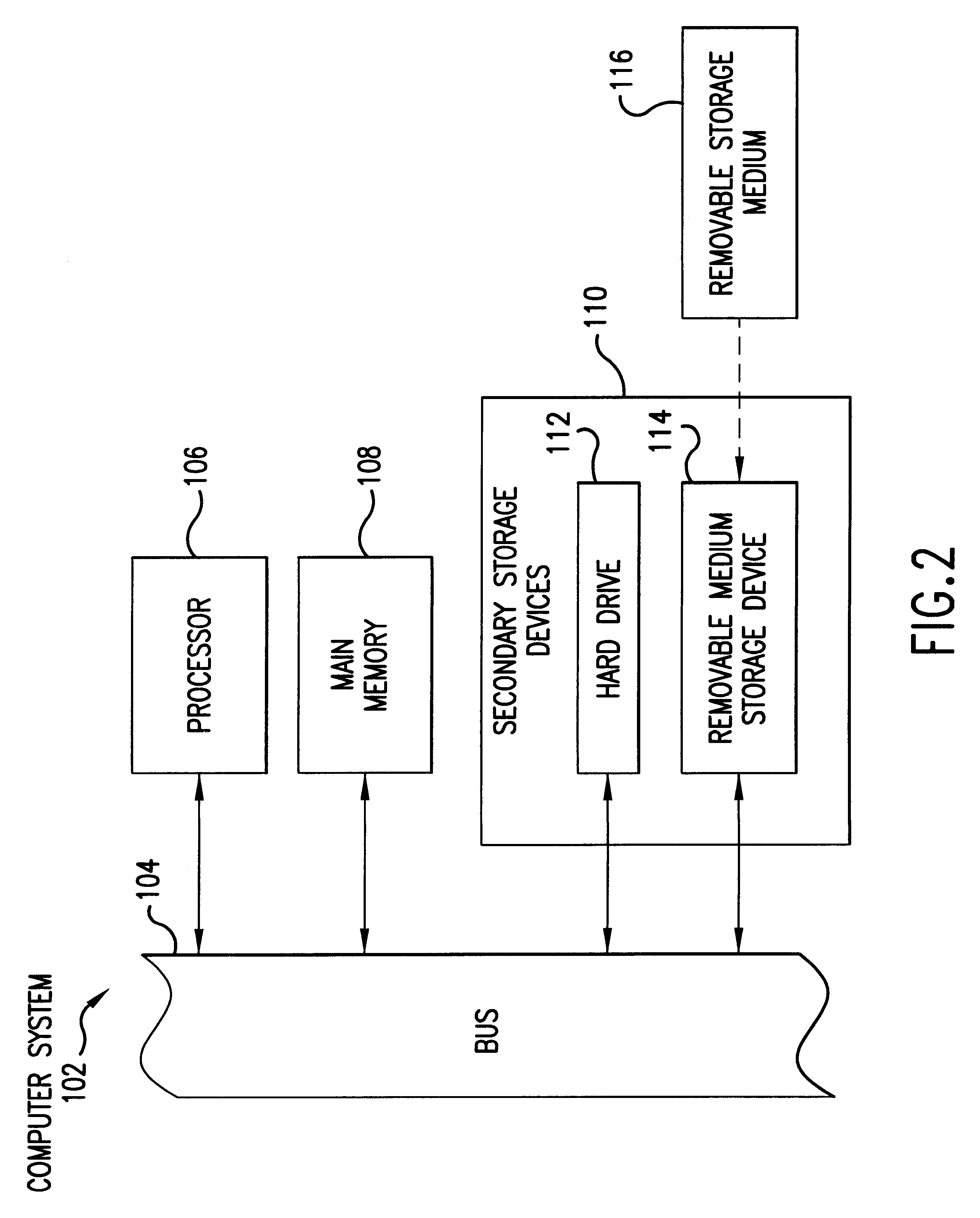Selected polynucleotide and polypeptide sequences of the methanogenic archaeon, methanococcus jannashii
a technology of methanogenic archaeon and polypeptide sequence, which is applied in the field of selected polynucleotide and polypeptide sequence of methanogenic archaeon, methanococcus jannashii, can solve the problems of hampered attempts to begin constructing, and type of residue may be completely unimportan
- Summary
- Abstract
- Description
- Claims
- Application Information
AI Technical Summary
Problems solved by technology
Method used
Image
Examples
example 1
A whole genome random sequencing method (Fleischmann, R. D., et al., Science 269:496 (1995); Fraser, C. M., et al., Science 270:397 (1995)) was used to obtain the complete genome sequence for M. jannaschii. A small insert plasmid library (2.5 Kbp average insert size) and a large insert lambda library (16 Kbp average insert size) were used as substrates for sequencing. The lambda library was used to form a genome scaffold and to verify the orientation and integrity of the contigs formed from the assembly of sequences from the plasmid library. All clones were sequenced from both ends to aid in ordering of contigs during the sequence assembly process. The average length of sequencing reads was 481 bp. A total of 36,718 sequences were assembled by means of the TIGR Assembler (Fleischmann, R. D., et al., Science 269:496 (1995); Fraser, C. M., et al., Science 270:397 (1995); Sutton G., et al., Genome Sci. Tech. 1:9 (1995)). Sequence and physical gaps were closed using a combination of str...
example 2
Preparation of PCR Primers and Amplification of DNA
Various fragments of the Methanococcus jannaschii genome, such as those disclosed in Tables 2a, 2b and 3 can be used, in accordance with the present invention, to prepare PCR primers. The PCR primers are preferably at least 15 bases, and more preferably at least 18 bases in length. When selecting a primer sequence, it is preferred that the primer pairs have approximately the same G / C ratio, so that melting temperatures are approximately the same. The PCR primers are useful during PCR cloning of the ORFs described herein.
example 3
Gene Expression from DNA Sequences Corresponding to ORFs
A fragment of the Methanococcus jannaschii genome (preferably, a protein-encoding sequence) provided in Tables 1a, 1b or 2 is introduced into an expression vector using conventional technology (techniques to transfer cloned sequences into expression vectors that direct protein translation in mammalian, yeast, insect or bacterial expression systems are well known in the art). Commercially available vectors and expression systems are available from a variety of suppliers including Stratagene (La Jolla, Calif.), Promega (Madison, Wis.), and Invitrogen (San Diego, Calif.). If desired, to enhance expression and facilitate proper protein folding, the codon context and codon pairing of the sequence may be optimized for the particular expression organism, as explained by Hatfield et al., U.S. Pat. No. 5,082,767, which is hereby incorporated by reference.
The following is provided as one exemplary method to generate polypeptide(s) from a...
PUM
| Property | Measurement | Unit |
|---|---|---|
| pH | aaaaa | aaaaa |
| optical density | aaaaa | aaaaa |
| optical density | aaaaa | aaaaa |
Abstract
Description
Claims
Application Information
 Login to View More
Login to View More - R&D
- Intellectual Property
- Life Sciences
- Materials
- Tech Scout
- Unparalleled Data Quality
- Higher Quality Content
- 60% Fewer Hallucinations
Browse by: Latest US Patents, China's latest patents, Technical Efficacy Thesaurus, Application Domain, Technology Topic, Popular Technical Reports.
© 2025 PatSnap. All rights reserved.Legal|Privacy policy|Modern Slavery Act Transparency Statement|Sitemap|About US| Contact US: help@patsnap.com


